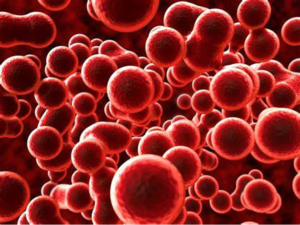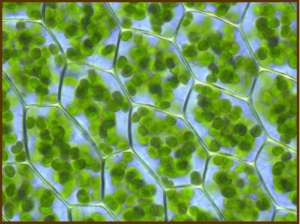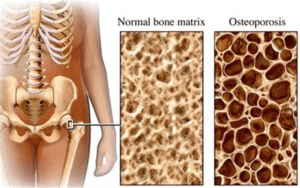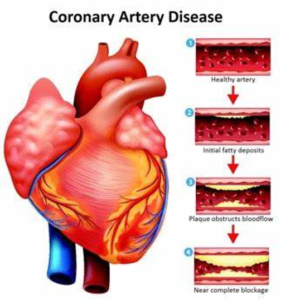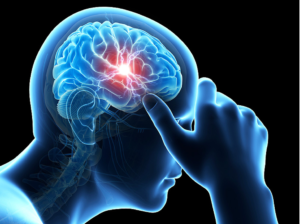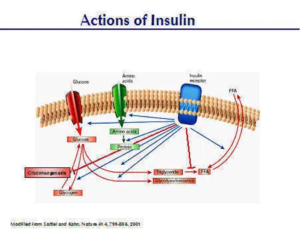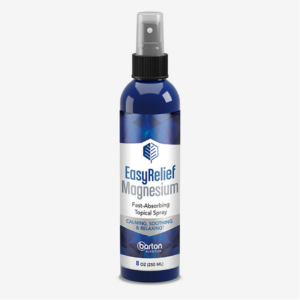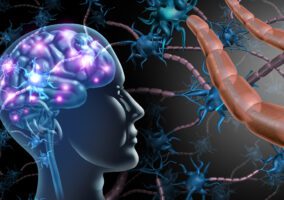Are You Getting Enough Magnesium? Your Body Depends On It!
The beautiful crystal above is magnesium. I live near a magnesium plant on the edge of the Great Salt Lake. The plant makes magnesium metal from the ancient inland Lake Bonneville, the precursor to the Great Salt Lake, where minerals have concentrated.
Magnesium is abundant. On average, one hundred gallons of seawater will have a pound of magnesium in the form of magnesium chloride salt. For this reason, there is a limitless resource for the metal. That is why regardless of the uses of magnesium, there is no problem when it comes to supply. However, it takes a lot of energy, in the form of electricity, to separate the magnesium from the chloride and purify it.
Magnesium is incredibly useful. Its alloys are found everywhere from cameras to airplanes. All racing tire rims are made of magnesium because the alloy is stronger and lighter than aluminum.
All biological systems require magnesium. Your blood is red because there is one atom of iron in each hemoglobin molecule of all your red blood cells.Plants are green because the same molecule that carries oxygen in your blood, hemoglobin, has an atom of magnesium instead of iron. This is called chlorophyll. So, the central atom in our blood is iron, whereas in chlorophyll it is magnesium.
That single atom of magnesium allows the plant to use the energy from light to make all its proteins and sugars from the carbon dioxide in the air. Without magnesium the plant would have no energy and could not survive, the same as if you had no iron for your blood.
But, you also need magnesium, as much as any plant. Magnesium is required in the human body for over 300 different enzymes. That’s a lot! Without magnesium the body doesn’t function at all.
For example, one of the essential functions of magnesium is in getting sugar into the cells. Without magnesium, insulin doesn’t work, and people can become insulin resistant just from being deficient in magnesium.[1]Symptoms of low magnesium[2]
- Cramps, muscle twitching
- Chronic pain
- Osteoporosis
- Abnormal Heart rhythm
- Hypertension
- Asthma
- Depression
- Anxiety
- Fatigue
- Migraine headaches
Osteoporosis and Magnesium Deficiency
Magnesium is essential for bone health, where 60% of the magnesium we need is stored.[3]If your body needs magnesium, it will take the minerals out of the bones – which also takes out the calcium. Calcium is then lost in the urine, and may create kidney stones. Proper deposition of calcium requires magnesium. Osteoporosis is most often related to a lack of magnesium, and not calcium. People with osteoporosis who only take calcium often don’t build their bones and end up with calcium deposits in their arteries.[4] Even people with sufficient calcium will get brittle bones if there is not enough magnesium.[5] Taking extra vitamin D won’t help because magnesium deficiency will create resistance to vitamin D. Magnesium deficiency is probably a more common cause of osteoporosis than both calcium deficiency and vitamin D deficiency – combined.[6]
Heart Disease and Magnesium Deficiency
People who have higher magnesium levels in the blood have lower blood pressure, and are 38% less likely to die of a heart attack.[7]\
Without sufficient magnesium, there are several problems that can happen to arteries. First, they will be more likely to build calcium deposits, and become clogged with atherosclerosis – or hardening of the arteries. Second, they become stiffer, requiring more pressure to push the blood to the tissues. And, third, the muscles in the arteries are not able to relax, decreasing the flow of blood to the tissues. This leads to fibromyalgia, neuropathy, migraine headaches, back pain, and especially – heart disease.
Migraine Headaches and Magnesium Deficiency
Those who suffer with migraine headaches have lower blood magnesium levels.[8]The blood vessels constrict and are not able to relax when there isn’t enough magnesium. The brain sends signals that it isn’t getting enough blood and increases the pressure. The excess pressure in the head is felt as pain. There are other reasons for having problems with circulation in the brain, causing migraines, but magnesium deficiency is among the more common.
Diabetes and Magnesium Deficiency
Type 2 diabetes is significantly associated with magnesium deficiency because magnesium is required for insulin to let sugar into the cells.[9]If there isn’t enough magnesium, then insulin doesn’t work. This is what is called “insulin resistance” or type 2 diabetes mellitus. Having sufficient magnesium will improve the function of insulin, lower insulin resistance, and even reverse type 2 diabetes.
Magnesium Deficiency
About two-thirds of the population in the western hemisphere does not get enough magnesium every day.[10] Magnesium is abundant in food, but none our staple foods are abundant in magnesium. For example, magnesium is in wheat, but not white flour; there is more magnesium in 100 grams of wheat bread (100mg) than in the same amount of spinach (80mg). By contrast, white bread has only about 20mg of magnesium per 100 grams.
Since our staple foods include meat and processed grains, it is hard for most Americans to get a good supply of magnesium. Few Americans live on beans, lentils, whole grains, and dark green vegetables so it’s hard to get an optimum supply of magnesium.
Foods that Deplete Magnesium
Moreover, some of the foods we eat can contribute to deficiency of magnesium.
Coffee is a diuretic that can cause the kidneys to waste magnesium. Alcohol causes irritation of the stomach, and decreased acid, so less magnesium can be absorbed. Ironically, people who supplement calcium are more likely to become magnesium deficient because the two minerals compete for absorption – and there is almost always more calcium available. And, not only does sugar inhibit absorption of magnesium, all types of sugar and carbohydrates cause the kidneys to waste it. So, sugar gets you at both ends.[11] Food today is packed with sugar. Even salty foods like gravy and meat spices are filled with sugar. It’s hard to get away from it.
- Alcohol
- Calcium supplementation (prolonged or in excess)
- Coffee
- High-sugar diet (glucose, fructose, sucrose, starch)
Drugs that DEPLETE magnesium
There are many drugs that lower magnesium stores in the body.[12] People think that because OMEPREZOLE (Prilosec) is over-the-counter, that it’s safe. This is not true. While in the short-term it doesn’t do much damage, if taken daily for long periods it can cause many problems, including low magnesium. Also, there are so many people taking diuretics for hypertension, who may become depleted in magnesium, which is a risk for hypertension! Other medications that may deplete magnesium include:
- Acid Blockers such as Omeprezole, Cimetidine
- Antibiotics
- Diuretics such as hydrochlorothiazide (HCTZ)
- Digoxin
- Central Nervous System (CNS) Stimulants
- Cholesterol Agents
- Corticosteroids
- Oral Contraceptives
- Diabetic medications
Diseases that Deplete Magnesium
Any illness that causes malabsorption can deplete magnesium.
Chronic diarrhea pushes food through the intestines rapidly, preventing absorption of nutrients. Also, “leaky gut” or any chronic inflammation such as celiac disease or gluten sensitivity can cause low magnesium.
- Irritable Bowel Syndrome
- Celiac Disease/Gluten sensitivity
How Do I Get Enough Magnesium?
We are often told that we don’t get enough nutrition because our foods are low since the soil is depleted of minerals. This may be true with some minerals, but magnesium is abundant in soils, and the plants will not grow without it. This mineral is found in two basic foods:
- All seeds that will grow (nuts, legumes, seeds, grains)
- Anything that is green
This pretty much sums it up. Seeds are anything that can grow a new plant. Nuts are seeds. Grain is seed. If it will grow into a plant, it must have magnesium. If that seed is processed, such as grains that have the bran and germ removed, it loses its magnesium. Don’t eat anything white (rice, bread, cereal, pasta), but instead eat whole grains, and you will be getting magnesium. Snack on nuts or sunflower seeds instead of chips.
Moreover, everything green has chlorophyll and thus, must have magnesium. Lettuce that is white (iceberg) or white asparagus has little magnesium. Those greens that are dark, such as chard and kale, have a lot of magnesium. Choose your vegetables accordingly.
Fish has about four times more magnesium than beef, and is a decent source, having even more than a serving of spinach.[13]
Milk has some magnesium. It is estimated that children in the United States get between 10% and 30% of their daily magnesium from milk and milk products.[14] But, it would take about 20 cups of milk or 10 cups of yogurt to get a full day’s supply of magnesium.[15] In other words, children in the United States are not getting enough magnesium for a growing body.[16]
Magnesium Supplements
One of the supplements I regularly recommend is magnesium for all the reasons above. It’s not easy to get enough in food, unless you are a healthy vegetarian – not all are. The maximum amount of magnesium that the body can handle is about 350mg per day.[17] Those who take more may end up with diarrhea. Many of the laxatives on the market are simply a high-dose of magnesium (milk of magnesia, magnesium citrate)
A good supplement should be about 400mg per day. Whatever is not absorbed will just be in your stool. If you get too much at one time in the colon it may cause diarrhea. I have some patients who suffer with chronic constipation who take extra magnesium every day for the laxative effect. It may also help to divide a dose morning and night to be able to get more.
For this reason, the recommended maximum is very close to what every person needs in a day. Thus, if you have one day that you don’t get enough, it’s hard to “catch up” by taking a very large dose in a supplement.
Topical Magnesium
Some have found they can avoid intestinal issues by spraying a “magnesium oil,” which is just a water solution of magnesium chloride, on their skin.One study indicated that the magnesium status of those using topical magnesium increased by over 50%.[18] There is other evidence that magnesium applied to the skin is absorbed.[19]
To maximize the benefit of the magnesium spray:
- Increase the area of application to increase absorption. Spray it all over, not just on one area.
- Areas with lots of hair such as the scalp and armpits have higher rates of absorption.
- Increasing the amount of time the application is left on the skin will allow more absorption.
- Heat enhances the delivery such as just after a shower.
- Increasing the frequency of applications will allow more to be absorbed.
- Well-hydrated skin will be more efficient than dry skin.
If you put on magnesium and find your skin gets hot or burning, this is due to the effect of magnesium on the blood vessels. As the arteries and veins enlarge, it can feel like a “hot flash.” It does NOT mean you are allergic, you are just having normal dilation of blood vessels. Our topical magnesium spray, Easy Relief Magnesium, is available for you to shop here.
PLAN to Avoid Magnesium Deficiency
Magnesium is such an important nutrient, and is often not appreciated by even nutritionists. Everyone has been so focused on calcium for osteoporosis, chromium for diabetes, zinc for the immune system, sodium for blood pressure, and potassium for cramps, they forget that magnesium is important for all of these! Magnesium is also essential for energy so it prevents fatigue, as well as helps with methylation, or the functions of vitamins B6, B9, and B12.
To avoid magnesium deficiency, make high-magnesium foods a staple. Beans, lentils, whole grains, nuts, seeds, dark green vegetables, and fish. Avoid any processed or prepared foods. Have dark greens with every meal. Find ways to incorporate these into your daily foods. Add nuts and seeds to your salads every day. Eat more beans, and less meat. My mom used to feed us brown rice, and add finely-chopped chard for color. When you make smoothies, avoid the processed powders, and put fresh greens, fruit, and for protein add an egg. These measures will assure that you get plenty of magnesium to keep your enzymes functional, prevent diabetes, heart disease, and high blood pressure.
If you have any issues with magnesium foods, or you are having symptoms of low magnesium, try supplements as described above. With supplements, it is important to take breaks periodically so your absorption remains intact. Taking it every day can diminish the amount you absorb, both from the supplement and from food. A good way to do this is by taking weekends off, for example, or taking it for one week and then off for a week. Not everyone needs to take magnesium, but if you do, you can maximize your benefit by following these guidelines.




